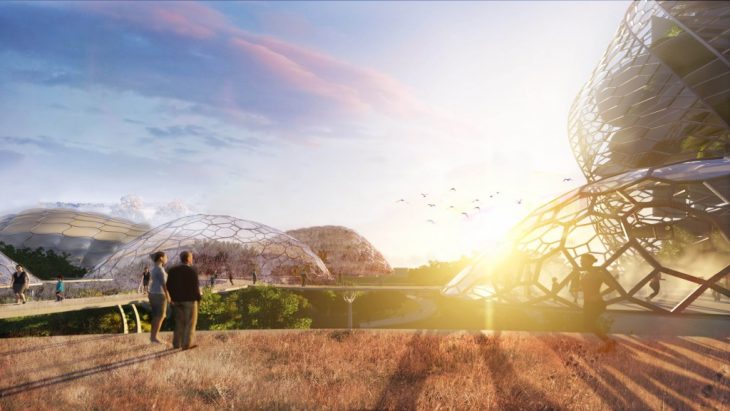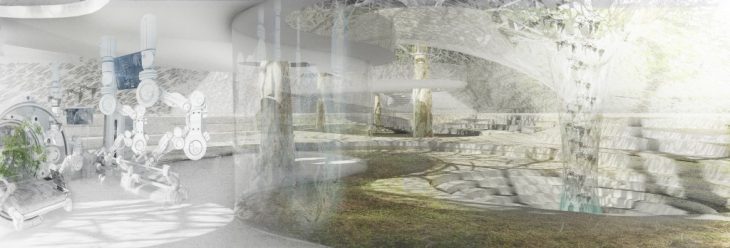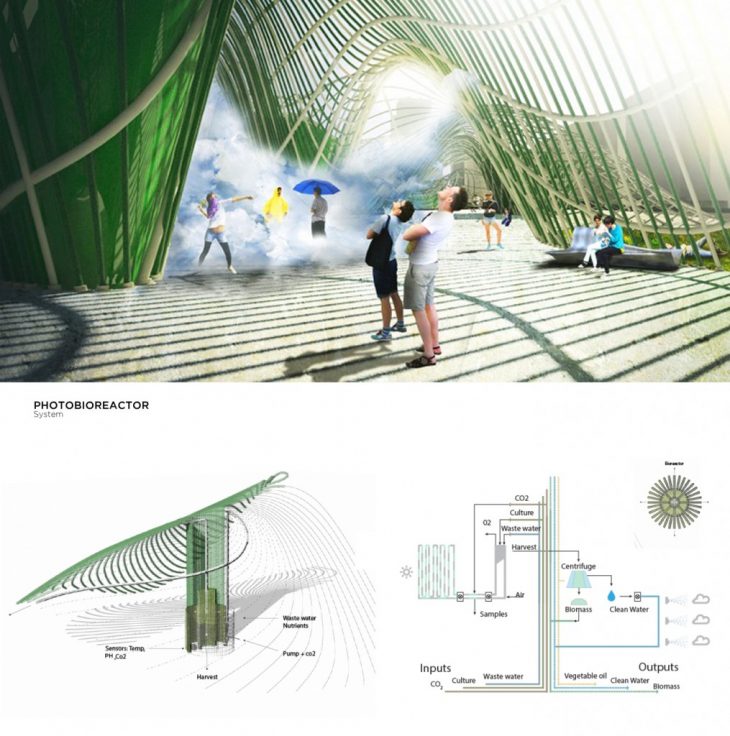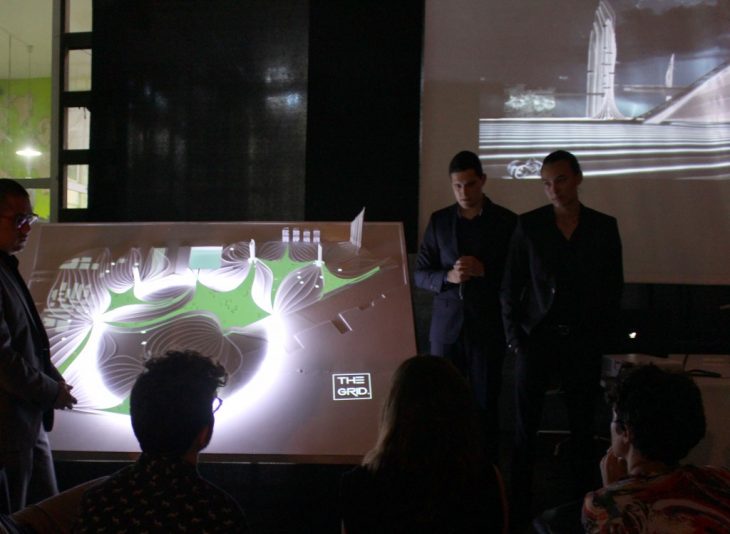RS.2 Research Studio
SELF SUFFICIENT BUILDING
Senior Faculty: Enric Ruiz Geli, Josep Perelló
Faculty: Mireia Luzárraga, Alejandro Muiño
Student Assistant: François Nour, Mohamad Rachid Jalloul
SYLLABUS
ATMOSPHERE: TOWARDS A BLUE SKY
We have the collective evidence that our individual actions and demands have a direct effect on
the environment we live in. Global warming is a priority goal in all of our agendas and it is starting
to change way of living. Politics like 2020 visibilize this statement: A certain quantity of milligrams
of particles of NO2 or PM10 in our atmosphere set the alarms of the EU and establish traffic
restrictions that are changing, not only the urbanism in our cities, but even the future chains of
production of vehicles. The atmosphere, far from being an empty and transparent element that
we travel through, is fully charged of agents, politics and agencies. An example would be the
aerial crisis in 2010 due to the volcanic eruptions of Eyjafjallajökull that caused the lost of millions
of dollars to companies and aerial lines because of the flight restrictions due to the ash particles
in the air.
We measure global warming with particles, and we believe we have to fight global warming with
particles too. And that will be our main tool at the self sufficient studio this year. We will produce
projects where air, atmosphere and everything that surrounds us will be used to work and reflect
upon. And our aim will be to create more healthy, inclusive and biodiverse environments.
Science, technology and the techniques lo alter nature and our bodies both physical and
social, have become indispensable to face this new scenario. Examples as the Cloud Seeding
projects, leaded by engineers and scientists and consisting on altering meteorological
conditions (increasing rain or snow, or even suppressing hail and fog) by adding chemicals to
the atmosphere show us that architects need to act interdisciplinary in order to perform these
new necessities. That is the reason why our faculty team will be formed by people from different
disciplines and will include the Physicist Josep Perelló as part of the main faculty.
The course will be organised in groups, and we will divide it into three exercises that will be as
follows:
FIRST EXERCISE:
COSMOGRAPHY
We set up the scenario that we are working on. We will choose a site with peculiar atmospherical
conditions. We will measure air particles, study impact on earth and we will use tools in order
to visibilize this information. The result will be a map (movie, diagram, model…) where we will
visibilize all the agents involved on the particular scenario that we will work on: not only particles
but regulations, people, mobility issues, etc….
SECOND EXERCISE:
MULTIPLIER OF AERODIVERSITY
The aim is to set a device (scale one to one) that recalls these different characteristics: it will
somehow alterate the initial conditions in order to alter a certain atmospheric aspect (create a
weather phenomena, improve air quality, clean space debris…), it will deal with at least a human
agent, a non human living agent and a technology.
THIRD EXERCISE:
SELF SUFFICIENT BUILDING
We will apply all the knowledge we’ve acquired on fully performing a building that compiles all the
characteristics recalled in the previous exercises and has the scale of a building.

LEARNING OBJECTIVES
The student will analyse in a critical way contemporaneous issues that go through technology,
architecture, ecology, politics and society. We will develop projects in different scales from the
design of a device to a building, that have a consciousness on these topics and can propose
an alternative. We will work with architecture integrating other disciplines such as digital
tools, ecology, studies on science and technology in order to build projects according to the
contemporaneous complexity. That is going to be accomplished working on a multidisciplinary
team.
If we agree on the statement of the briefing that the role of the architect is changing nowadays,
the tools, media, and skills that the new architect has to necessarily change also. The student will
learn new media and tools in order to achieve a contemporaneous project that will be presented
to a multidisciplinar international jury in June.
STUDIO SUPPORT SEMINAR – Masterclasses
GUILLEM BARAUT (BAC)
structures: support for the 2nd and 3rd exercise
JULIO LUZÁN
3D scanning with Faro Laser Scan
ALEJANDRO MUIÑO
rendering and postproduction
ANDRÉS HISPANO
fiction: other narrative tools for architects
CAROLINA LÓPEZ
animation: other narrative tools for architects.

RESEARCH TRIP: DATES AND INFO
The field trip will have two parts:
FEBRUARY: one-day visit to Cern.
We will go on a one-day trip to Genève to visit Cern (European Organization for Nuclear Research).
APRIL 8th-15th: FIELD TRIP
The field trip will explore a fragile ecosystem with a unique atmosphere that is facing the consequences of Global Warming. In order to face what is going to happen in the future in terms of environment, we need to visit those fragile places that with a minimum change of parameters get unbalanced. One of these places is the North of Norway.
We will see atmospheric phenomena like Aurora Boreal and cohabitate with other species such
as whales and dogs.

